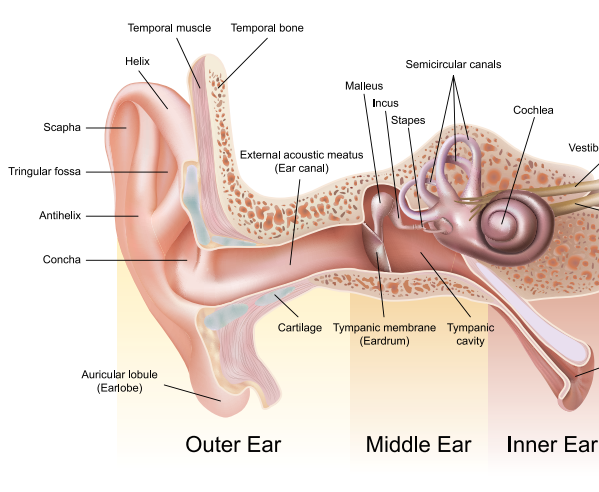Benign paroxysmal positional vertigo (BPPV) is a disorder arising from a problem within your inner ear. BPPV results in recurring brief episodes of vertigo (a sensation of spinning) and nausea, with possible balance impairments.

These episodes are triggered by a change in head position such as tipping your head up or down, turning over in bed or sitting up in bed. Each episode of vertigo typically lasts less than one minute and is usually eased when you stop the triggering movement. BPPV is one of the most common causes of vertigo.
Within your inner ear is the vestibular apparatus. This apparatus includes three loop-shaped structures called semicircular canals. The canals contain fluid and fine,hair-like sensors that send information to your brain on the position of your head. This information is important for keeping your balance, orientation and a steady gaze.
At the base of the semicircular canals you will find the otolith organs (the utricle and saccule).
These organs contain crystals that sense a change in gravity or/and pressure.
At the base of the semicircular canals you will find the otolith organs (the utricle and saccule).
These organs contain crystals that sense a change in gravity or/and pressure.
BPPV happens when some of these crystals from your otolith organs become dislodged and move into one of your semicircular canals. This causes a disruption in the signals to your brain, giving inaccurate information on your head position and a feeling of vertigo,which can make you feel nauseous and off Balance.
BPPV can happen as a result of a head injury or it can occur with no known cause. A diagnosis can be made when symptoms and a nystagmus (a jerky movement of the eyes) are reproduced during a positioning test.
Your healthcare practitioner will guide you through the positioning test, which involves a series of head and body movements, to identify the affected semicircular canal.
Once a diagnosis is confirmed, your healthcare practitioner can treat your BPPV effectively with a repositioning technique, involving another series of movements, to relocate the crystals from your semicircular canals back towards your otolith organs.
BPPV typically resolves on its own within a few weeks, but many find that treatment with a repositioning technique significantly reduces or may completely resolve the symptoms. People who have experienced BPPV once may be more susceptible to a recurrence.
Your physio will discuss self treatments with you, which you will be able to do at home if you experience these symptoms again.
TREATMENT PLAN BY DON KELLY
If you experience chronic pain, injuries, or advice for knee surgery and replacement please don’t hesitate to reach out. I have treated thousands of my patients with successful results over the last 20 years of my physio services.
BEFORE YOU SAY YES TO KNEE SURGERY REPLACEMENT- give me a ring for an assessment.
My treatment plan is the result of my experience and knowledge in treating chronic pains and injuries over the last 20 years. This is the holistic plan to guarantee pain relief, prevent recurring pains, and faster recovery.
EVALUATION/ASSESSMENT
PHYSIOTHERAPY PLAN BASED ON MY ASSESSMENT
ACUPUNCTURE
CUSTOM ORTHOTICS
EXERCISE PROGRAMME


